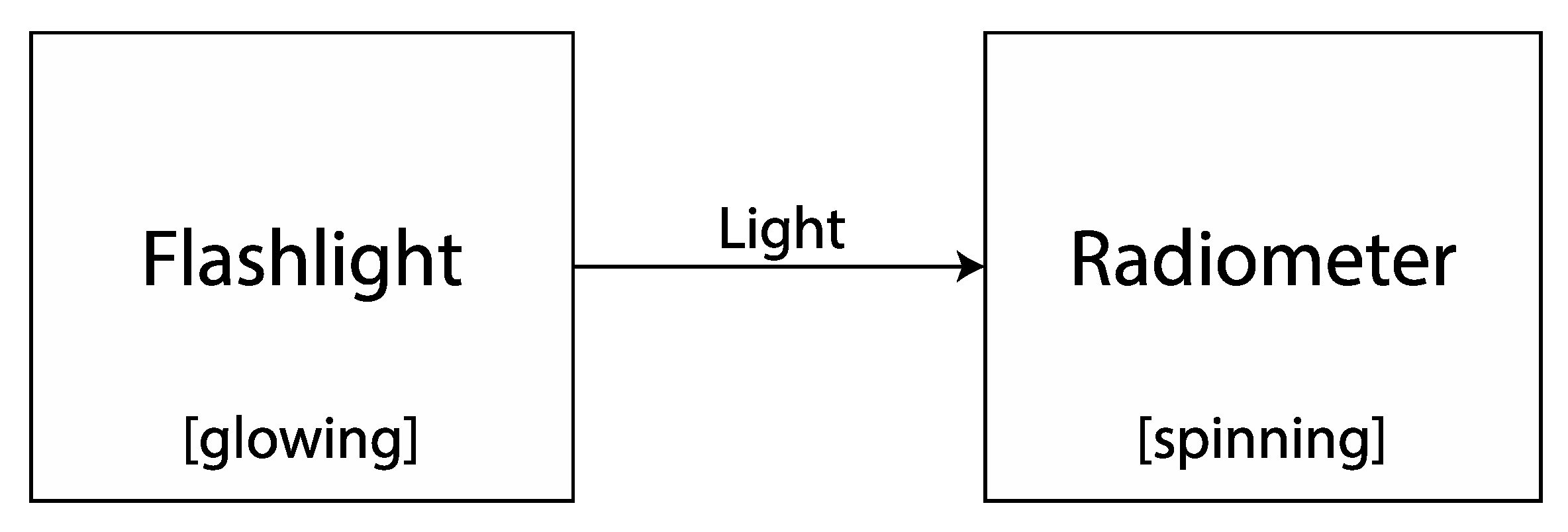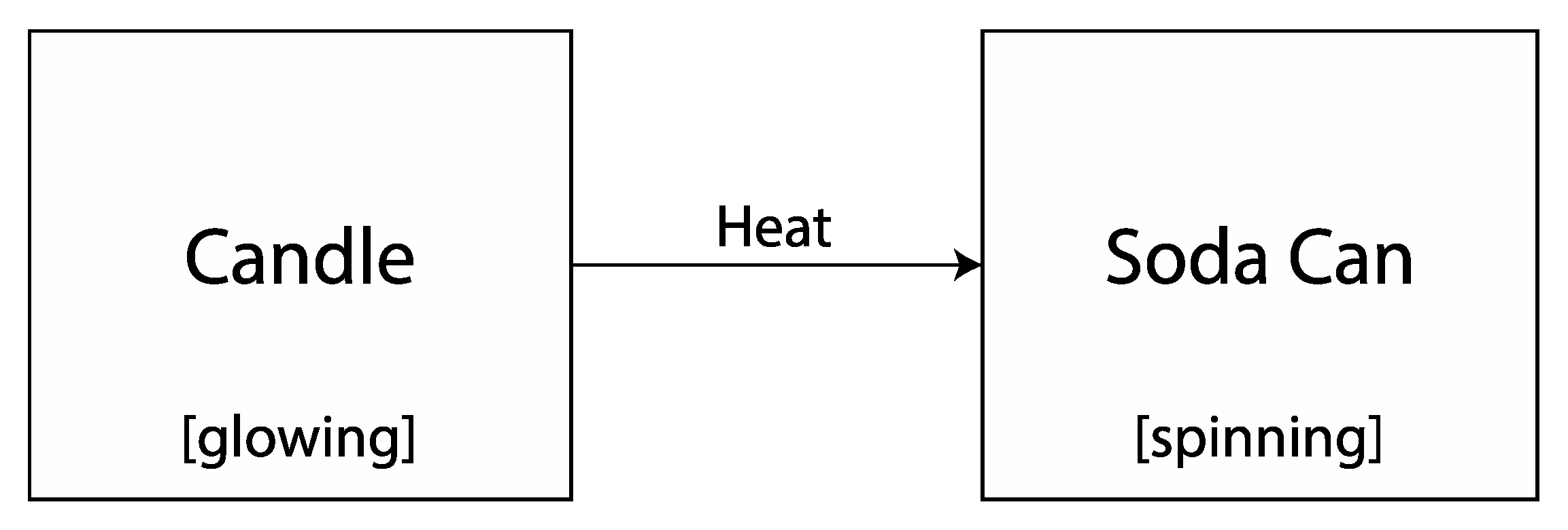On the Nature and Utility of Crosscutting Concepts
Abstract
:1. Introduction
- Patterns
- Cause and effect: mechanism and explanation
- Scale, proportion, and quantity
- Systems and system models
- Energy and matter: flows, cycles, and conservation
- Structure and function
- Stability and change
2. The History and Nature of CCCs
3. The Role of CCCs in Supporting Science and Engineering Learning
4. What Does CCC-Informed Science Instruction Look Like?
4.1. CCCs in Elementary Science Instruction
4.1.1. CCCs as Resources with Diverse Student Groups
- Implication 1: All students come to the science classroom with intuitive ideas about CCCs [18] based on their funds of knowledge from their homes and communities. Teachers need to leverage these intuitive ideas about CCCs and guide students in using CCCs to make sense of phenomena. Over time, teachers build on, and make visible, students’ intuitive ideas about CCCs so these ideas become shared resources in the classroom community. This perspective on CCCs calls for a shift in teacher disposition from a deficit perspective (i.e., students from diverse backgrounds come to the science classroom with limited sensemaking resources) to an asset perspective (i.e., students from diverse backgrounds come to the science classroom with intellectual resources).
- Implication 2: Teachers provide opportunities for students to use CCCs across science contexts and disciplines. Meaningful use of CCCs in different disciplines allows all students to formalize their intuitive ideas about CCCs. Rather than associate a particular CCC with a specific discipline, students view CCCs as resources they can draw upon flexibly to make sense of phenomena in any discipline.
- Implication 3: Teachers guide students in using CCCs intentionally when presented with unfamiliar phenomena so that their understanding and use of CCCs become more sophisticated across grade levels, grade bands, and K-12 education. For students to progress from an intuitive use of CCCs to one that is more intentional, teachers design coherent instructional sequences that help students recognize how and when CCCs are useful resources for sense making of phenomena.
4.1.2. The SAIL Garbage Unit
- Unit 1: What happens to our garbage? (physical science)
- Unit 2: Why did the tiger salamanders disappear? (life science)
- Unit 3: Why does it matter if I drink tap water or bottled water? (Earth science with engineering embedded)
- Unit 4: Why do falling stars fall? (space science)
4.2. CCCs in Middle School Science Instruction
4.2.1. Energy as a Crosscutting Idea
4.2.2. The ELeVATE Energy Unit
5. Discussion
Author Contributions
Funding
Institutional Review Board Statement
Informed Consent Statement
Conflicts of Interest
References
- National Research Council. A Framework for K-12 Science Education: Practices, Crosscutting Concepts, and Core Ideas; The National Academies Press: Washington, DC, USA, 2012; ISBN 978-0-309-21742-2. [Google Scholar]
- NGSS Lead States Next Generation Science Standards. Available online: www.nextgenscience.org (accessed on 1 May 2023).
- American Association for the Advancement of Science. Benchmarks for Science Literacy; Oxford University Press: New York, NY, USA, 1993. [Google Scholar]
- National Committee on Science Education Standards and Assessment; Board on Science Education; Division of Behavioral and Social Sciences and Education; National Research Council. National Science Education Standards; National Academies Press: Washington, DC, USA, 1996; p. 4962. ISBN 978-0-309-05326-6. [Google Scholar]
- Sekretariat der Ständigen Konferenz der Kultusminister der Bundesrepublik Deutschland. Beschlüsse der Kultusministerkonferenz—Bildungsstandards im Fach Physik für den Mittleren Schulabschluss (Jahrgangsstufe 10) [Report of the Cultural Ministry Conference—Education Standards in the Subject Physics for the Completion of Middle School (Grade 10)]; Luchterhand: Munich, Germany, 2005; Available online: https://www.kmk.org/fileadmin/Dateien/veroeffentlichungen_beschluesse/2004/2004_12_16-Bildungsstandards-Physik-Mittleren-SA.pdf (accessed on 1 May 2023).
- Sekretariat der Ständigen Konferenz der Kultusminister der Bundesrepublik Deutschland. Beschlüsse der Kultusministerkonferenz—Bildungsstandards im Fach Chemie für den Mittleren Schulabschluss (Jahrgangsstufe 10) [Report of the Cultural Ministry Conference—Education Standards in the Subject Chemistry for the Completion of Middle School (Grade 10)]; Luchterhand: Munich, Germany, 2005; Available online: https://www.kmk.org/fileadmin/Dateien/veroeffentlichungen_beschluesse/2004/2004_12_16-Bildungsstandards-Chemie.pdf (accessed on 1 May 2023).
- Sekretariat der Ständigen Konferenz der Kultusminister der Bundesrepublik Deutschland. Beschlüsse der Kultusministerkonferenz—Bildungsstandards im Fach Biologie für den Mittleren Schulabschluss (Jahrgangsstufe 10) [Report of the Cultural Ministry Conference—Education Standards in the Subject Biology for the Completion of Middle School (Grade 10)]; Luchterhand: Munich, Germany, 2005; Available online: https://www.kmk.org/fileadmin/Dateien/veroeffentlichungen_beschluesse/2004/2004_12_16-Bildungsstandards-Biologie.pdf (accessed on 1 May 2023).
- Rehmat, A.P.; Lee, O.; Nordine, J.; Novak, A.M.; Osborne, J.; Willard, T. Modeling the Role of Crosscutting Concepts for Strengthening Science Learning of All Students. In Proceedings of the Summit for Examining the Potential for Crosscutting Concepts to Support Three-Dimensional Learning; Fick, S.J., Nordine, J., McElhaney, K.W., Eds.; University of Virginia: Charlottesville, VA, USA, 2019; pp. 66–73. [Google Scholar]
- Osborne, J.; Rafanelli, S.; Kind, P. Toward a More Coherent Model for Science Education than the Crosscutting Concepts of the next Generation Science Standards: The Affordances of Styles of Reasoning. J. Res. Sci. Teach. 2018, 55, 962–981. [Google Scholar] [CrossRef]
- Lederman, N.G.; Lederman, J.S. Next Generation Science Teacher Educators. J. Sci. Teach. Educ. 2013, 24, 929–932. [Google Scholar] [CrossRef]
- Rivet, A.E.; Weiser, G.; Lyu, X.; Li, Y.; Rojas-Perilla, D.; Looi, C.K.; Polman, J.L.; Cress, U.; Reimann, P. What Are Crosscutting Concepts in Science? Four Metaphorical Perspectives. In Transforming Learning, Empowering Learners: The International Conference of the Learning Sciences (ICLS) 2016; International Society of the Learning Sciences: Singapore, 2016; Volume 2, pp. 970–973. [Google Scholar]
- Quinn, H. The Role of Crosscutting Concepts in Three-Dimensional Science Learning. In Crosscutting Concepts: Strengthening Science and Engineering Learning; Nordine, J., Lee, O., Eds.; National Science Teaching Association: Arlington, VA, USA, 2021; pp. xi–xix. ISBN 978-1-68140-728-9. [Google Scholar]
- Fulmer, G.W.; Tanas, J.; Weiss, K.A. The Challenges of Alignment for the Next Generation Science Standards. J. Res. Sci. Teach. 2018, 55, 1076–1100. [Google Scholar] [CrossRef]
- Massachusetts Department of Elementary and Secondary Education Massachusetts’ Adaptation of Next Generation Science Standards. Available online: https://www.doe.mass.edu/stem/standards/NGSS-MAAComparison.html (accessed on 16 December 2022).
- Fick, S.J.; Arias, A.M. A Review of Literature That Uses the Lens of the next Generation Science Crosscutting Concepts: 2012–2019. J. Res. Sci. Teach. 2022, 59, 883–929. [Google Scholar] [CrossRef]
- National Research Council. Developing Assessments for the Next Generation Science Standards; National Academies Press: Washington, DC, USA, 2014; ISBN 978-0-309-28951-1. [Google Scholar]
- González, N.; Moll, L.C.; Amanti, C. Funds of Knowledge Theorizing Practice in Households, Communities, and Classrooms; Lawrence Erlbaum Associates: Mahwah, NJ, USA, 2005; ISBN 9786613722645. [Google Scholar]
- Fick, S.J.; Baek, J.; Arias, A.M. Unit Planning Using the Crosscutting Concepts. Sci. Scope 2017, 40, 40–45. [Google Scholar]
- Lee, O.; Llosa, L.; Grapin, S.; Haas, A.; Goggins, M. Science and Language Integration with English Learners: A Conceptual Framework Guiding Instructional Materials Development. Sci. Educ. 2019, 103, 317–337. [Google Scholar] [CrossRef]
- Lindsey, B.A.; Heron, P.R.L.; Shaffer, P.S. Student Understanding of Energy: Difficulties Related to Systems. Am. J. Phys. 2012, 80, 154–163. [Google Scholar] [CrossRef]
- Jewett, J.W. Energy and the Confused Student II: Systems. Phys. Teach. 2008, 46, 81–86. [Google Scholar] [CrossRef]
- Nordine, J.; Fortus, D.; Lehavi, Y.; Neumann, K.; Krajcik, J. Modelling Energy Transfers between Systems to Support Energy Knowledge in Use. Stud. Sci. Educ. 2018, 54, 177–206. [Google Scholar] [CrossRef] [Green Version]
- Fortus, D.; Kubsch, M.; Bielik, T.; Krajcik, J.; Lehavi, Y.; Neumann, K.; Nordine, J.; Opitz, S.; Touitou, I. Systems, Transfer, and Fields: Evaluating a New Approach to Energy Instruction. J. Res. Sci. Teach. 2019, 56, 1341–1361. [Google Scholar] [CrossRef] [Green Version]
- Kubsch, M.; Nordine, J.; Neumann, K.; Fortus, D.; Krajcik, J.S. Probing the Relation between Students’ Integrated Knowledge and Knowledge-in-Use about Energy Using Network Analysis. Eurasia J. Math. Sci. Technol. Educ. 2019, 15, 8. [Google Scholar] [CrossRef] [PubMed]
- Kubsch, M.; Opitz, S.; Nordine, J.; Neumann, K.; Fortus, D.; Krajcik, J. Exploring a Pathway towards Energy Conservation through Emphasizing the Connections between Energy, Systems, and Fields. Discip. Interdscip. Sci. Educ. Res. 2021, 3, 2. [Google Scholar] [CrossRef]




| Rivet, et al. [11] Metaphors | Fick and Arias [15] Literature Themes |
|---|---|
| N/A | Opportunities to learn |
| Lenses | Funds of knowledge |
| Tools | Connection to DCI |
| Connection to SEP | |
| Bridges | Bridges across disciplines |
Disclaimer/Publisher’s Note: The statements, opinions and data contained in all publications are solely those of the individual author(s) and contributor(s) and not of MDPI and/or the editor(s). MDPI and/or the editor(s) disclaim responsibility for any injury to people or property resulting from any ideas, methods, instructions or products referred to in the content. |
© 2023 by the authors. Licensee MDPI, Basel, Switzerland. This article is an open access article distributed under the terms and conditions of the Creative Commons Attribution (CC BY) license (https://creativecommons.org/licenses/by/4.0/).
Share and Cite
Nordine, J.C.; Lee, O. On the Nature and Utility of Crosscutting Concepts. Educ. Sci. 2023, 13, 640. https://doi.org/10.3390/educsci13070640
Nordine JC, Lee O. On the Nature and Utility of Crosscutting Concepts. Education Sciences. 2023; 13(7):640. https://doi.org/10.3390/educsci13070640
Chicago/Turabian StyleNordine, Jeffrey Carl, and Okhee Lee. 2023. "On the Nature and Utility of Crosscutting Concepts" Education Sciences 13, no. 7: 640. https://doi.org/10.3390/educsci13070640






